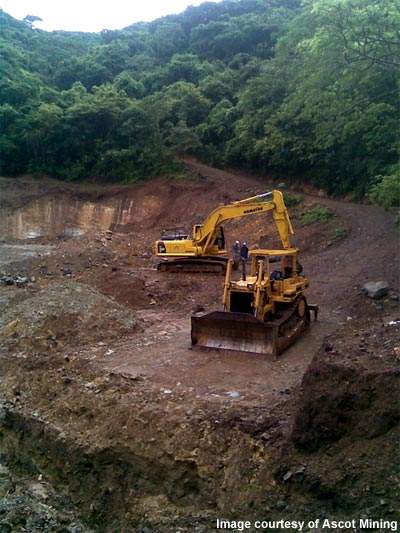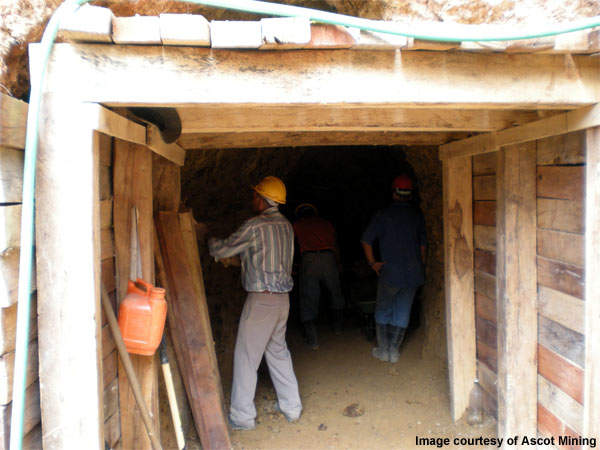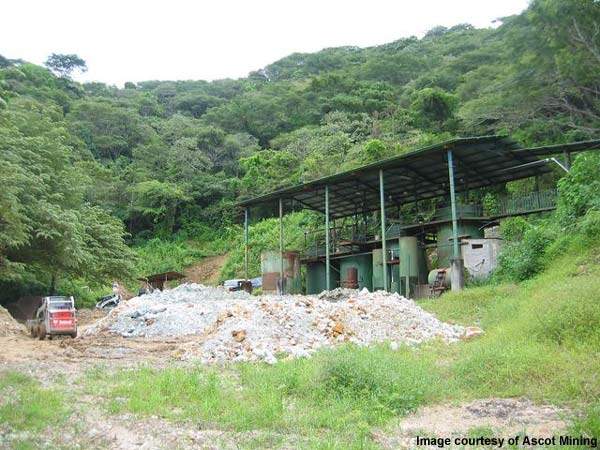The Chassoul gold mine is located 70km north-west of the capital city of Costa Rica in San Jose. Owned by Veritas Gold, a wholly owned subsidiary of Ascot Mining, the mine covers an area of 400ha and includes nine identified veins. Its development was initiated in 1991. Veritas Gold commenced production at the mine in September 2009.
Chassoul gold mine geology
The Chassoul deposit is hosted within the Costa Rican Gold belt, which lies on the western end of the magmatic arc. The arc was formed due to the continuous subduction of the oceanic Cocos plate situated beneath the continental crust of the Caribbean plate.
The zone is characterised by three tertiary age geological units. The lower-most unit is the aguacate group formed of andesitic and basaltic volcanics and volcaniclastics, including lacustrine sediments. It hosts the largest amount of gold and silver mineralisation in the belt.
The next unit is the Guacimal intrusive complex, which includes several independent bodies of felsic to intermediate composition dispersed along the northwest-southwest arc trend. Overlying these two units is the Monteverde Formation that consists of andesitic volcanics, lahars and other volcaniclastics.
The deposit is characterised by lava, pyroclastics and dike units of the aguacate group. Being the oldest unit, the lava is found within the main and lateral sections of the deposit. It consists primarily of andesites, porphyritic and massive lava with intercalations of pyroclastic rocks that have been intruded partially by intermediate composition dikes.
The north-eastern side of the deposit hosts lahars and grey andesite flows of the Monteverde formation that is unevenly deposited on the aguacate group. No hydrothermal alteration is demonstrated by the lavas.
Quaternary deposits that range in thickness up to 3m partially blanket the outcrops of the La Negra and Amarilla veins. The deposits consist of andesitic blocks and quartz fragments scattered inside a rough grain matrix, which is partially fragmented and clay altered.
Recent alluvium deposits consisting of conglomerates are located across the Barranquilla River valley, found 1,500m west of the Chassoul mine. The conglomerates contain blocks of different types and sizes, primarily of volcanic origin and dominated by fresh andestic rocks.
Chassoul deposit mineralisation
Mineralisation at the Chassoul deposit is of the low sulphidation epithermal gold vein type. Deposit formation takes place largely on felsic, subaerial volcanic complexes in extensional and strike-slip structural bodies.
Mineralisation occurs in near-surface hydrothermal systems, including hot springs at the surface and hydrothermal fluid-flow regions found deeper.
The gold-bearing mineralisation of the Chassoul mine demonstrates four styles of epithermal alteration, including weak or propylitic, medium argillic, strong argillic and siliceous alteration.
Chassoul mine production
Initial mining took place from the Veta Cajeta vein, one of the nine identified veins of the deposit. The upper levels mined produced up to 106.75g of gold or 3.43oz/t.
In January 2012, the upper Amarilla vein was opened. The vein is providing the primary ore feed to the processing plant. A new ore zone located 10km away was also opened. Work is currently being carried out at the Lower Cajeta vein.
Gold dore production has been increasing steadily in 2012. Production increased from 153 ounces (oz) of gold dore in February 2012 to 252oz in April.
Mine milling and processing
Milling operations at the mine began on 29 September 2009. The initial capacity of the plant has been 20t/d with an average grade of 15g/t. The capacity is expected to increase to 50t/d and gradually to 150t/d as the circuit is balanced.
Gold bearing ore is treated in a primary crusher that reduces it to less than half in size. Oversized ore is returned to the crusher via a vibrating screen while the fine ore is delivered to the fine ore bin.
In the ball mill, the fine ore is further reduced to match the size and consistency of flour. The flour-like material is then passed to the leach tank, filled with a diluted solution of cyanide. It is charged via mechanical methods and or air. Fresh material is continuously added.
The solution containing gold is drawn out and sent to the Pachuca tanks. The Pachuca tanks contain activated carbon that can absorb the gold from the solution. The gold-void solution still containing small amounts of cyanide is sent back to the circuit and the process is continued.
The activated carbon, which is loaded with gold, is chemically stripped. Gold left in the solution is pumped into an electro-winning cell, allowing raw gold to deposit on the cathode. The cathode is sent to the smelting oven and the liquid that comes out is poured into dore bars that are delivered for final processing to the refinery.









